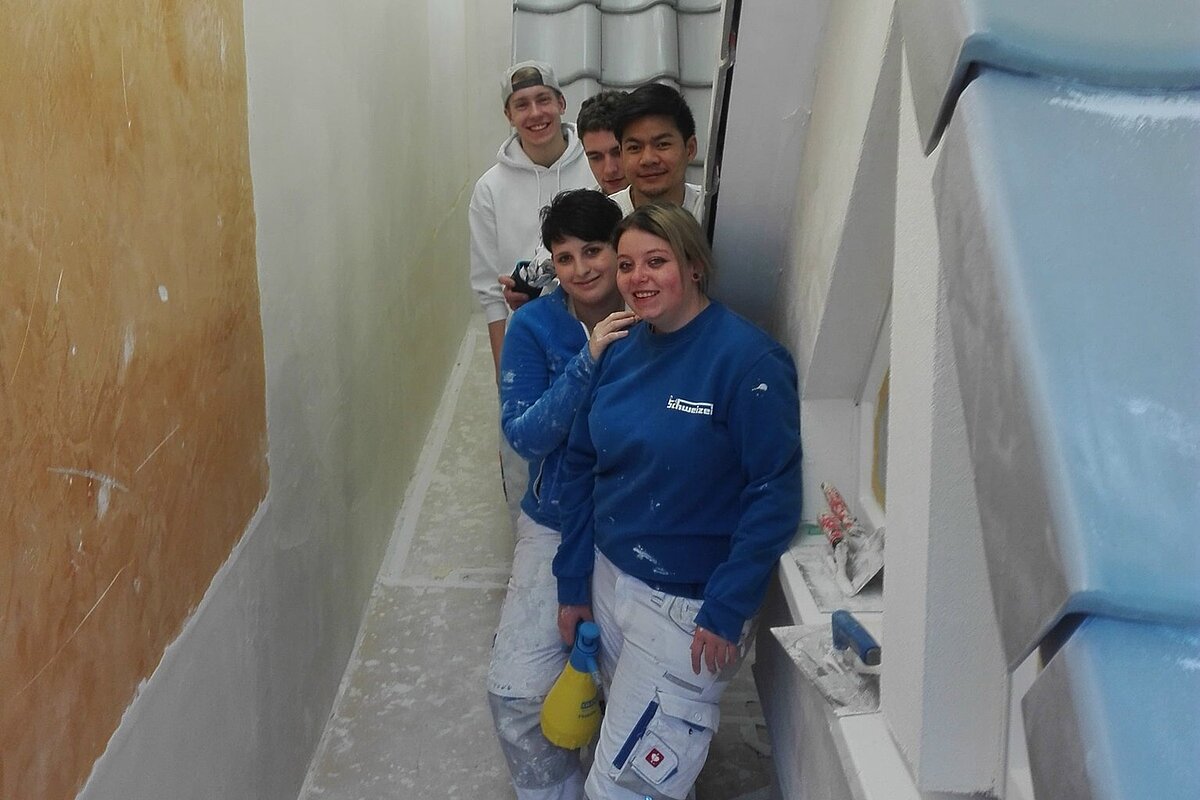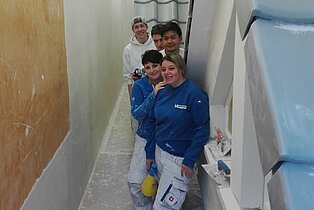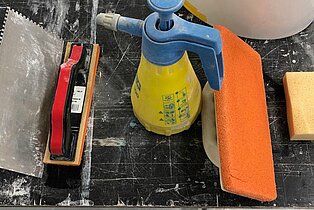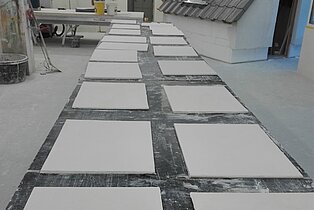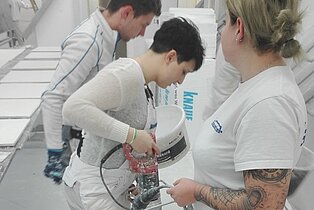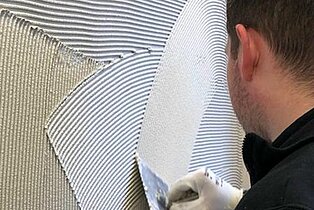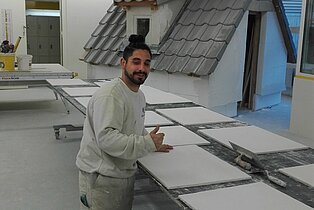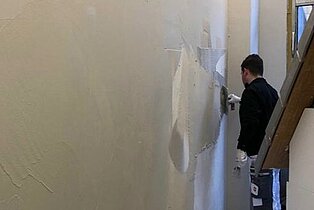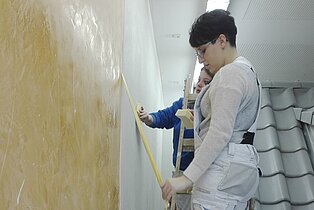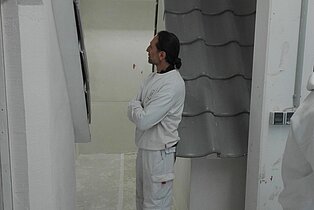Trainee plasterers rehearsing for Tel Aviv
From 11 to 13 March 2019, three groups of young plasterers attended training courses at the vocational training centre in Leonberg in preparation for their involvement in the facade renovation project at the Max-Liebling House in Tel Aviv. From the end of March, with the help of young Israeli craftspeople, they will be working on this listed Bauhaus building, repairing cracks and damaged plasterwork. In Leonberg, they received an introduction from Jochen Drescher, head of the plasterwork workshop at ÜBA, and from Walter Söhner, a lecturer at the vocational training centre in Leonberg.
During this workshop, the apprentices were made ready for the conditions they would encounter in Tel Aviv and carried out a selected range of tasks. For example, the facade has cracks in the plasterwork; these will be repaired by applying felted render with a thickness of 0.5 mm. The old plasterwork is also buckled, and an external insulation finishing system involving the use of a woven fabric-backed render coating would be an appropriate solution to this problem. However, this is not viable because of the listed status of this building. As a first step, tutorial supervisor Jochen Drescher familiarised the trainees with the material.
The trainees constructed a sample panel made from 12.5 mm gypsum cardboard drywall and measuring 62.5 x 50 cm. To achieve sufficient adhesion, the trainees mixed a quartz substrate which they then applied with brushes. While this adhesive plaster bridge was drying, the trainees tasked themselves with preparing a few walls in the workshop for their finishing plaster. This involved masking the edges and doors as well as filling holes, dents and notches.
Next, work continued on the quartz substrate. Jochen Drescher showed the young craftspeople how to apply the first layer of plaster with a serrated trowel to a uniform thickness of 2 mm. Immediately after that, they smoothed the surface with a flat spatula to leave a flat surface. The apprentices then left the material to set, ensuring that it was neither too dry nor too wet when they came to apply the second layer of plaster, this time just 1 mm thick. After leaving it to dry once more, the material was moistened again. The plasterers then textured the surface using sponge floats. Jochen Drescher instructed the apprentices to pay attention to uniform coverage, and advised them not to let felted fabric extend into the first layer. If required, the apprentices were advised to use a sponge in order to achieve a fine texture.


